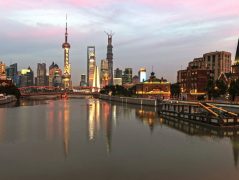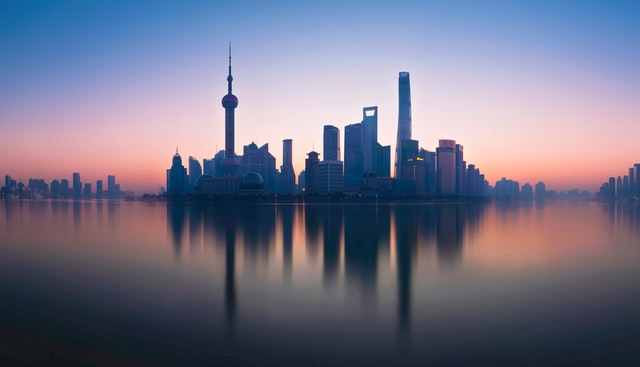
Shanghai
Contents
1 Introduction2 Data and facts3 Administration4 Economy5 Infrastructure6 Technology7 Social Wellness and Human Resources7.1 Education7.2 Health7.3 Tourism8 ReferencesIntroduction
Shanghai, also spelled Shang-hai, city and province-level shi (municipality), east-central China. It is one of the world's largest seaports and a major industrial and commercial centre of China. Shanghai, known as the ‘Oriental Paris’, is China's biggest and richest city (on aggregate).
 Shanghai is the world's largest megacities
Shanghai is the world's largest megacities
It is one of China's greatest economic and cultural centers; therefore, it is seen as a showcase for everything considered modern in China. The city rivals New York or Paris in terms of modernity and boasts a blended culture of the East and the West. Shanghai is a tourist destination famous for historical landmarks as well as modern, ever-expanding skylines. You will never get bored in this dynamic metropolis.
Data and facts
- Shanghai is situated at 31°41' north latitude and 121°29' east longitude. The city, whose name literally means "on the sea", is located on the east China coast just to the south of the mouth of the Yangtze River.
- Except for a few hills lying in the southwest corner, most parts of the Shanghai area are flat and belong to the alluvial plain of the Yangtze River delta. The average sea level elevation is about 4 meters.
- The city covers an area of 6,340.5 square kilometers, which extends about 120 kilometers in north and south and nearly 100 kilometers in east and west. Shanghai has an urban area of 2,643 square kilometers, land area of 6,219 square kilometers and water area of 122 square kilometers.
- Shanghai is the world's largest city. Shanghai is one of the most populated cities in China. It has a permanent resident population of 23,019,200, of which 12.21 million live in the urban areas. Shanghai population accounts for 1.1% of the Chinese population, with the average density of 2059 inhabitants per square kilometers (3854 in the urban areas).
- Shanghai is a transportation powerhouse. The longest metro system in the world spreads beneath the city of Shanghai with 400 miles (644 km) of tunnels and track. The Shanghai metro has 393 stations spread throughout the city and connecting major attractions, making it easy to navigate for international visitors.
- Shanghai's Pudong and Hongqiao international airports are also powerhouses of transportation, servicing a combined total of more than 110 million passengers annually.
- Shanghai has the largest bus system in the world with more than 1,424 bus lines.
- Shanghai has the world’s largest Disney Store 54,000 square feet (5,017 sq. meters)
- The best times to visit Shanghai are in the spring and autumn. Summers have temperatures in the 90s °F (32°C+) and high humidity levels. Winter temperatures hover around freezing, and it becomes damp.
Administration
As a first-order, province-level administrative unit, Shanghai municipality is, in theory, directly controlled by the central government in Beijing. It is difficult, however, to gauge the precise nature of that relationship. Since the Cultural Revolution of the late 1960s, China’s administrative apparatus at all levels of the hierarchy has been in a process of readjustment so as to bring governmental organization in line with political reality. In 1967, early in the Cultural Revolution, the Shanghai Municipal Revolutionary Committee was established as the top governing body in the municipality after a chaotic period in which a number of popular-based revolutionary organizations seized control of the city for brief periods. The committee at that time was composed of representatives of the army, the mass revolutionary organizations, and some former Communist Party officials. By the mid-1970s that body had been replaced by a municipal government made up of commissions, offices, and bureaus responsible to the Shanghai People’s Congress, an elected body. Those units serve both policy advisory and administrative functions and function as administrative links to both the national government in Beijing as well as the local governing bodies.
Economy
Shanghai is an important economic, financial, trade and shipping center in China. It contributes greatly to the whole nation's economic structure and the development of society. Taking up only 0.06% of the country's land area, Shanghai economy now generates about 8.3% of China's gross industrial output value, 10% of its ports' cargo-throughput, 25% of the total value of the country's imports and exports and 12.5% of the total revenue of China.
Infrastructure
Shanghai started 23 and finished 19 major infrastructure construction projects last year according to the Shanghai Housing and Urban-Rural Development Commission. Investment in these projects reached 141.8 billion yuan (US$21 billion), a level not seen since 2010. The year witnessed the first China International Import Expo. The renovation of the venue, greenbelt projects around the expo area, lighting projects and removing overhead cables were all finished ahead of schedule, the commission said. In 2018 the city completed construction of the fourth stage of Yangshan Deep-water Port, the underground tunnel of South Zhongshan No.1 Road, and the renovation of Hongqiao International Airport’s terminal one. Also last year, the total length of Shanghai’s Metro network reached 705 kilometers and more than 100 kilometers of overhead cables were removed from the streets. Housing and aged care were two key parts of the public service projects carried out last year. More than 170,000 households benefited from the renovation and modifications of old residential warrens and now have more spacious flats or have moved into new houses.
Technology
Shanghai is looking to be the primary global destination for science and technology efforts, after burnishing its credentials as a hub for finance and shipping. To achieve that goal, Shanghai will construct a national science centre and develop several key industries including integrated circuits, biomedicine and artificial intelligence, the authorities said during a recent news briefing on Shanghai's high-quality growth. Shanghai's efforts to become a global tech hub started gaining steam in 2016 when it officially announced its ambition to transform itself into a science and technology centre. It identified four major tasks then, including establishing a comprehensive national science centre and implementing basic projects and strategic programmes.
Social Wellness and Human Resources
Education
Education in Shanghai includes five years of primary education, four years of junior secondary education, and three years of senior secondary education, as well as higher education, including universities and colleges.
Health
The government-funded healthcare system, introduced in the late 1990s and expanded to include foreign employees as of October 2011, will not meet expatriate needs. Therefore, expats need either an international health insurance policy or cover for private medical care from a Chinese insurance provider.
Tourism
With links to 110 cities in 48 countries, the commercial, trading and transportation hub of Shanghai is the gateway to China for many travellers. Though rich in cultural heritage, the city’s prime calling card is its urban charm. The People’s Square and the banks of Huangpujiang River offer great sightseeing, business and shopping opportunities. You can shop in high-end venues for designer items or cruise through the backstreets to hunt for interesting trinkets, including a myriad of traditional Chinese handicrafts. Sheshan Mountain, Dingshan Lake, Yangshan Deep Water Port and Chongming Island are great choices for day-trip escapes. The city enjoys a pleasant northern sub-tropical maritime monsoon climate with four distinct seasons.
References
https://www.chinahighlights.com/shanghai/top-reasons-to-visit.htm
https://www.macrotrends.net/cities/20656/shanghai/population
https://www.britannica.com/place/Shanghai/Administration-and-society
https://www.shine.cn/news/metro/1901118005/
https://www.internations.org/go/moving-to-shanghai/living
https://en.wikipedia.org/wiki/Shanghai
https://www.cnbc.com/2016/09/20/biggest-megacities-in-china.html
https://shanghaifact.weebly.com
https://en.wikipedia.org/wiki/Ministry_of_State_Security_(China)
https://www.scmp.com/article/974360/opium-war-or-how-hong-kong-began
 Metricsbeta
Metricsbeta
- Qinglong Town
746[2]
沪C (outer suburbs only)